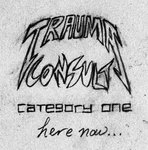What is frostnip?
A mild form of cold injury that is reversible, characterized by numbness, pain, and pallor. Frequent on exposed digits, ears, and nose.
What is frostbite?
Irreversible tissue damage caused by ice crystal formation leading to cellular death. Characterized by initial tissue freezing injury, followed by reperfusion injury during rewarming.
How is frostbite severity graded?
First degree: No blistering; tissue is frozen with hyperemia and edema
Second degree: Frozen tissue with hyperemia, edema, and large, clear blisters
Third degree: Death of subcutaneous tissues and skin leading to small, hemorrhagic blisters
Fourth degree: Necrosis, gangrene, and full-thickness tissue loss.
What are chilblain and pernio?
Terms describing local cold injury characterized by pruritic skin lesions on the face, anterior surface of the tibia, or dorsum of the hands and feet.
Associated with a chronic vasculitis of the dermis, provoked by repeated exposure to cold (not freezing) temperatures.
Can be managed with antiadrenergics or calcium channel blockers.
What is trench foot?
Nonfreezing injury to hands or feet caused by chronic exposure to wet conditions just above freezing. Involves alternating vasospasm and vasodilatation leading to eventual ulceration.
What is the management of frostbite?
1. Remove patient from cold environment. Do not rub or exercise the extremity.
2. Manage ABCs, addressing systemic hypothermia and fluid resuscitation.
3. Rapidly rewarm tissue by immersion in a warm water bath of 40-42 degrees C.
4. Provide narcotic analgesia as necessary.
5. Address tetanus status.
6. Cleanse and dry skin of affected area.
7. Keep affected extremity elevated to minimize edema, with cotton between digits to prevent maceration.
8. Consider angiography and thrombolytic therapy
9. Allow demarcation of tissue necrosis.
10. Monitor for compartment syndromes during the rewarming phase
When is amputation and surgical debridement recommended?
Delayed for 2-3 months, unless tissue becomes infected or sepsis intervenes.
Often, permanent tissue loss is less than expected.
"...of all the factors in the treatment of frostbite that may influence outcome, premature surgical intervention by any means, in any amount, was by far the greatest contributor to poor results."
Allow the devitalized tisue to demarcate!
Besides tissue necrosis, what are some skin complications after frostbite?
Hyperhidrosis
Neuropathy
Decreased nail and hair growth
Persistent Raynaud's phenomenon
Late... SG
Source:
Jurkovich GJ. Environmental Cold-Induced Injury. Surg Clin N Am 2007; 87: 247-267.



No comments:
Post a Comment